Fire Insulation
A building construction in which the structural members (including walls, partitions, columns, floors, and roof) are of noncombustible materials having fire-endurance ratings at least equal to those specified by the appropriate authorities is fire resistive construction. Elements of fire protection include
- Use of non-combustible building materials,
- Use of fire-resistive building assemblies,
- Installation of automatic detection devices and sprinklers,
- Development of improved fire fighting techniques.
Fire-resistive Ratings
- “Fire resistance rating” is a legal term utilized by model codes to regulate building construction.
- The fire-resistive ratings of various materials and constructions are established by laboratory tests
- Specified in terms of hours a material or assembly can be expected to withstand exposure to fire.
- For exterior walls, floors, and roof of masonry or fire-resistive material with a fire-resistance rating of at least 2 hours.
Fire-Resistive Assemblies
- An assembly is a combination of materials put together in a specific way that achieves the fire resistance rating required in the building code.
- For example, gypsum wallboard applied to a steel stud.
- Fire-resistance ratings apply only to assemblies in their entirety.
Fire-retardant materials
- Rock wool
- Gypsum boards
- Asbestos cement
- Perlite boards
- Calcium silicate boards
- Treated lumber plywood
- Treated vegetable fiber (e.g. Cotton, Jute, Kenaf, Hemp, Flax, etc..)



Gypsum Boards and Calcium Silicate Board
Gypboard®/ Gyproc® gypsum plasterboards are the ultimate lining solution for today’s buildings, providing high levels of performance in terms of fire rating, acoustic insulation, thermal insulation,
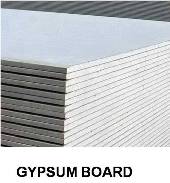
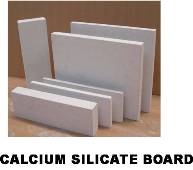
Gyproc® CalSica is an extra strong calcium silicate board with excellent fire and moisture resistant properties. It has high abrasion resistance and is a termite proof board. When used with metal framing system in drywalls it is good sound insulator.
Fireproofing of Construction Materials
- In construction, heavy wood timbers have a relatively high fire resistance, because fire tends to burn very slowly inward from the surface, leaving enough sound timber in the center to prevent collapse.
- Wood framing can also be impregnated with ammonium phosphate solution or covered with special mastics.
- To be classed as fire resistive, buildings must be made of reinforced concrete or protected steel that will stand considerable fire with minor damage;
- While steel retains its strength up to a very high temperature, it fails rapidly at temperatures over 1,000°F (540°C).
- Structural steel may be protected in a number of ways. It can be faced with brick, concrete, or tile; however, construction with these materials usually adds too much weight to a building.
- A protective layer of concrete over all surfaces of a beam or over the steel bars in reinforced concrete has to be at least 2.5 in. (6.4 cm) thick to be effective;
- hollow clay tile used to cover beams and girders has to be at least 4 in. (10 cm) thick.
- most buildings use lightweight fireproofing such as gypsum, perlite, and vermiculite mixed in plaster; one inch (2.5 cm) of such materials will absorb an equivalent amount of heat as 2.5 in. (6.4 cm) of concrete.
- Some recent buildings circulate water inside each column, protecting the structure against meltdown.
- In urban areas, buildings must also provide protection against fire in neighboring buildings through fireproof exterior walls-preferably windowless, since windows are fire openings.
Installation of Automatic system
- Fire alarm system : Smoke Detector
- Active Fire protection system : Sprinklers
- Active fire protection device: fire extinguisher
Smoke Detector & fire alarm system
A smoke detector is a device that detects smoke, typically as an indicator of fire. Commercial, industrial, and mass residential devices issue a signal to a fire alarm system, while household detectors, known as smoke alarms, generally issue a local audible and/or visual alarm from the detector itself.
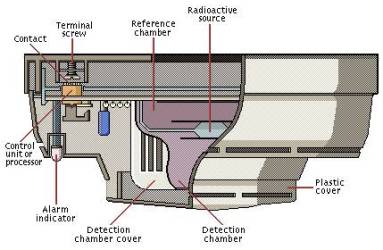
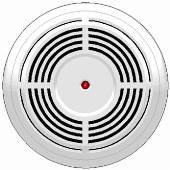

Sprinklers & fire protection system
A fire sprinkler is an active fire protection measure, consisting of a water supply system, providing adequate pressure and flow rate to a water distribution piping system, onto which fire sprinklers are connected.
Although historically only used in factories and large commercial buildings, home and small building systems are now available at a cost-effective price.

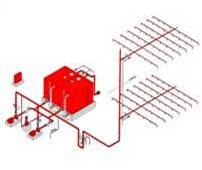
Fire Extinguisher
A fire extinguisher is an active fire protection device used to extinguish or control small fires, often in emergency situations. It is not intended for use on an out-of-control fire, such as one which has reached the ceiling, endangers the user (i.e., no escape route, smoke, explosion hazard, etc.), or otherwise requires the expertise of a fire department. Typically, a fire extinguisher consists of a hand-held cylindrical pressure vessel containing an agent which can be discharged to extinguish a fire.
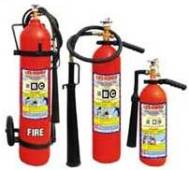
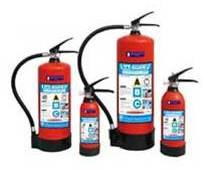
- Water Type Fire Extinguisher
- Mechanical Type Fire Extinguisher
- Dry Powder Fire Extinguisher
- CO2 Fire Extinguisher
- Dry Powder ABC Stored Fire Extinguisher
Fire Resistant Door
A fire resistant door, just like an ordinary door, needs to be opened, closed, locked, latched, bolted, cleaned and maintained. At the same time, unlike an ordinary door, a fire resistant door need to be power packed with anti-fire characteristics, display robust construction with capabilities to take on a wide assortment of fitments, glazed panels and ironmongery. There are two forms of Fire resistant doors that are for the picking. (a) Timber door frames and (b) Steel Door frames.
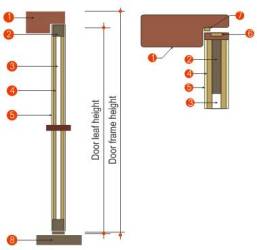
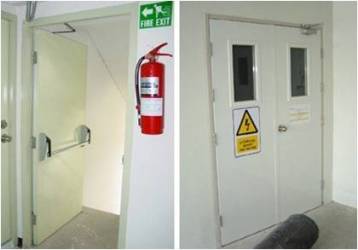
How to Build a Fire Resistant House
- Install fire alarm system and fire protection systems .
- Install GFI (ground fault circuit interrupters) outlets and circuit breakers.. It can, in just 1/30 of a second, trip the internal circuit, effectively cutting off the flow of electricity in the event of a possible short.
- Use as much concrete as possible in the structure of your home.
- Use hard materials for flooring, doors and roofing. Carpet is highly combustible.
- Install safety features. Fire alarms
Indian Standards (IS CODE) for FIRE
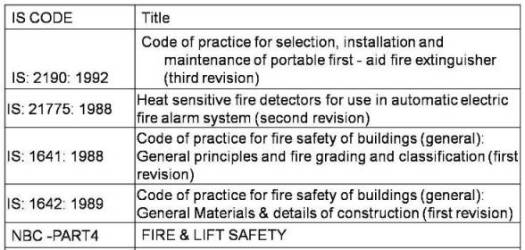
Information on this site is purely for education purpose. The materials used and displayed on the Sites, including text, photographs, graphics, illustrations and artwork, video, music and sound, and names, logos, IS Codes, are copyrighted items of respective owners. They are provided here just for refrence/information.
For your views and discussions Register in FDAchitects Forum …
I like your Inspiration article